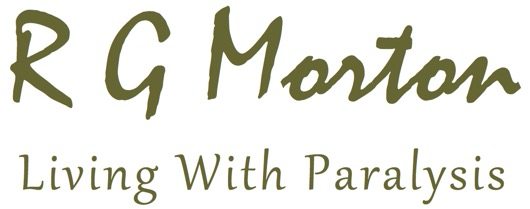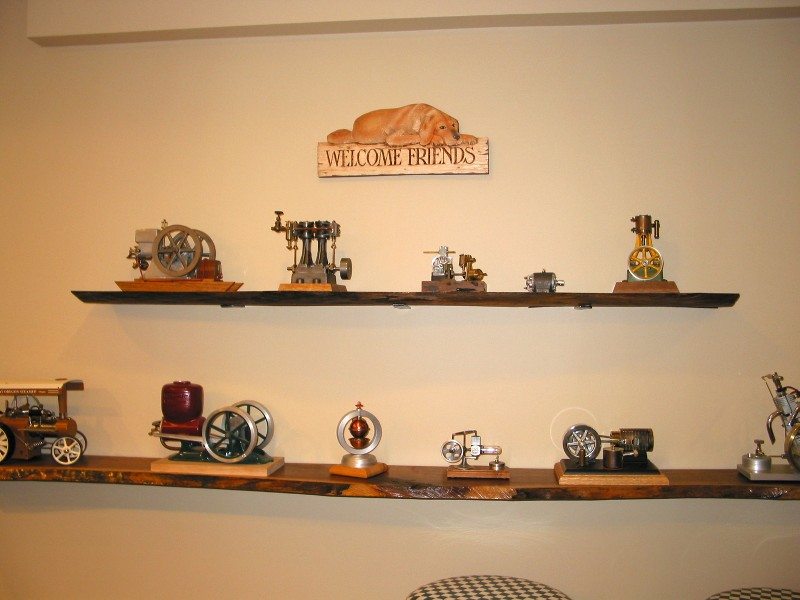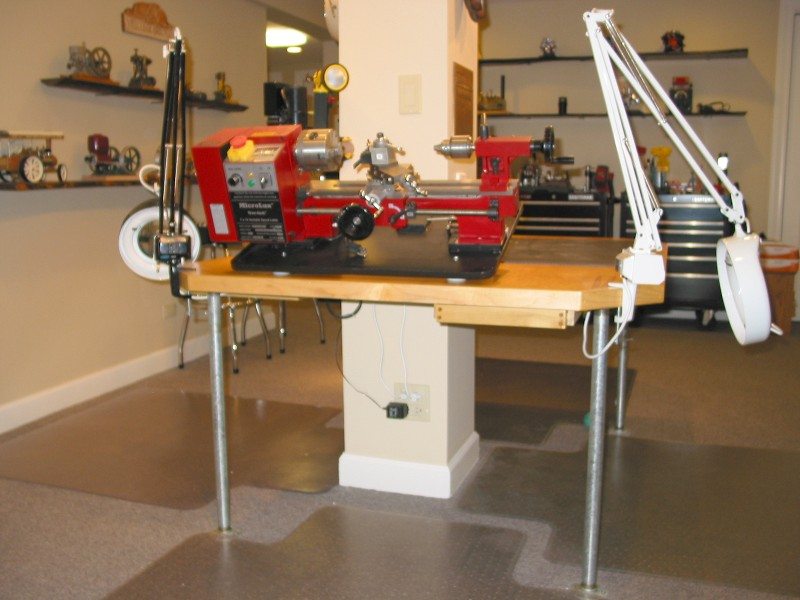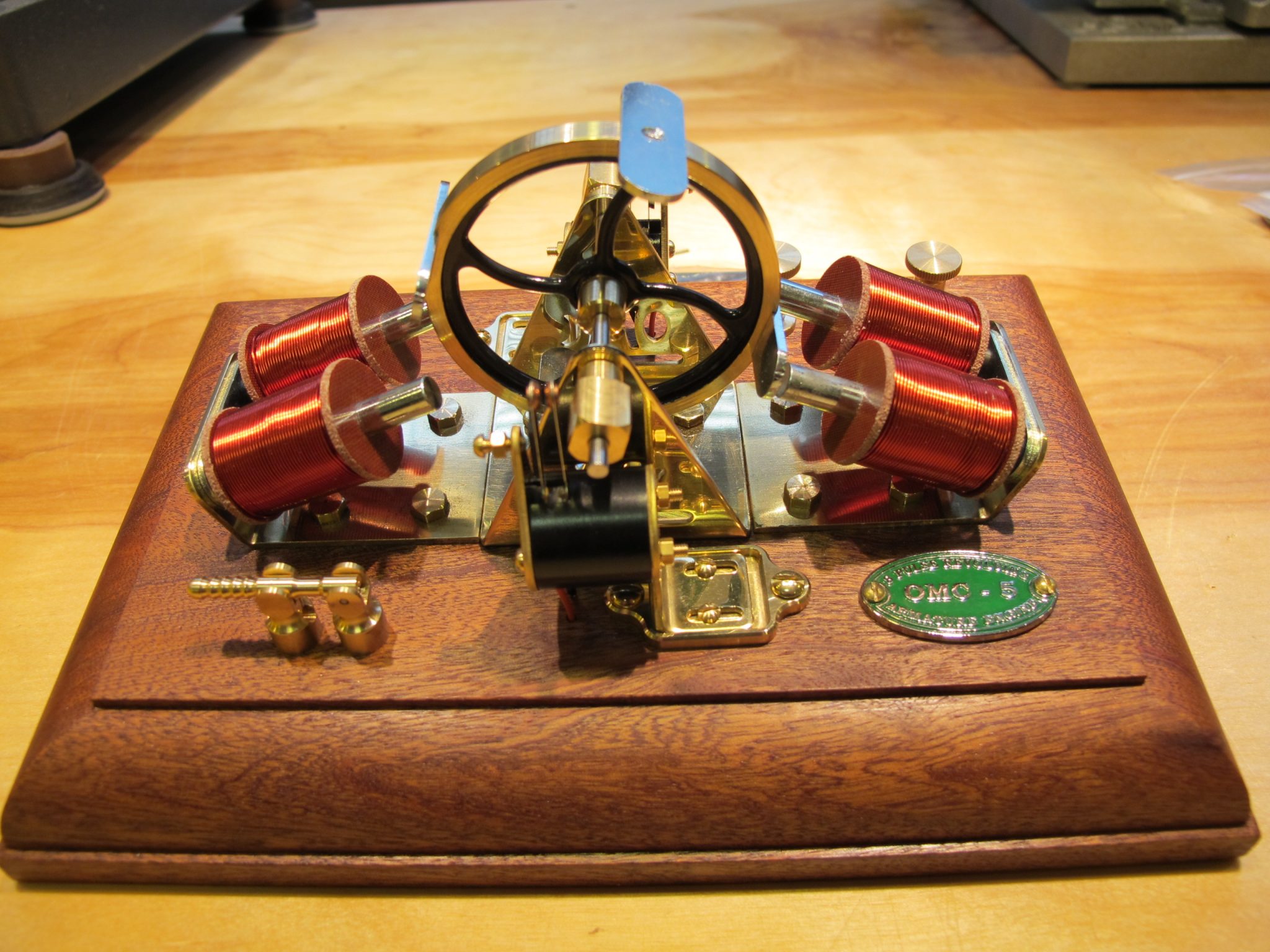My Machine Shop

My shop’s lathe is a 7 x 12 Chinese lathe imported by Micro-Mark. This company has a great selection of precision quality tools especially considering their smallish size, which generally infers either poor quality or toy status – definitely not the case with these tools. Sadly the Chinese lathe could be better quality, but in this size range, there is little else except the English Myford, which is almost unobtainable due to high cost. Prior to the Chinese (Sieg) lathe I had a Sakai lathe. Sadly Sakai abruptly existed the market orphaning their product. For those orphan owners in need, here is a PDF of the Sakai manual.
In addition there is a Sherline vertical milling machine and other small power tools.
The walnut base overlayed with a copy of the hole template spray adhesived to the base. The red X just kept me from re-drilling the smaller holes.
Flywheels with the 4 ferris bits that form the armature. These are the bits that the magnets attract.
The contactor points – assembled (more photos later) they switch power to the coils which attract the ferris bits. Operated by a 4-sided cam.
The motor mocked up – a few parts need to be test fitted – then disassemble for paint and final finishing, though many of the bits are well finished.
Placing the contactor bracket onto the base. Precision drilling the holes is made very clear at this step.
Prototype assembly completed – about 2 hours or so, now will reflect on color of paint and breakdown for final finishing steps. Don’t know when…
By the mid 1800’s several versions of this arrangement had been tried and the OMC-5 Revolving Armature Engine is an such an example.
The base with DIN style terminal strips. If I was to do this over, First I would attach the magnet wires, then position the strip to the base.
The aftermath of a narrow brush with “death” – dumb me. Moral – don’t ‘open all (ok most of them) of the drawers at once!
Nestled amongst the other time-wasters constructed over the years.
Watch the video of the completed project!

















































